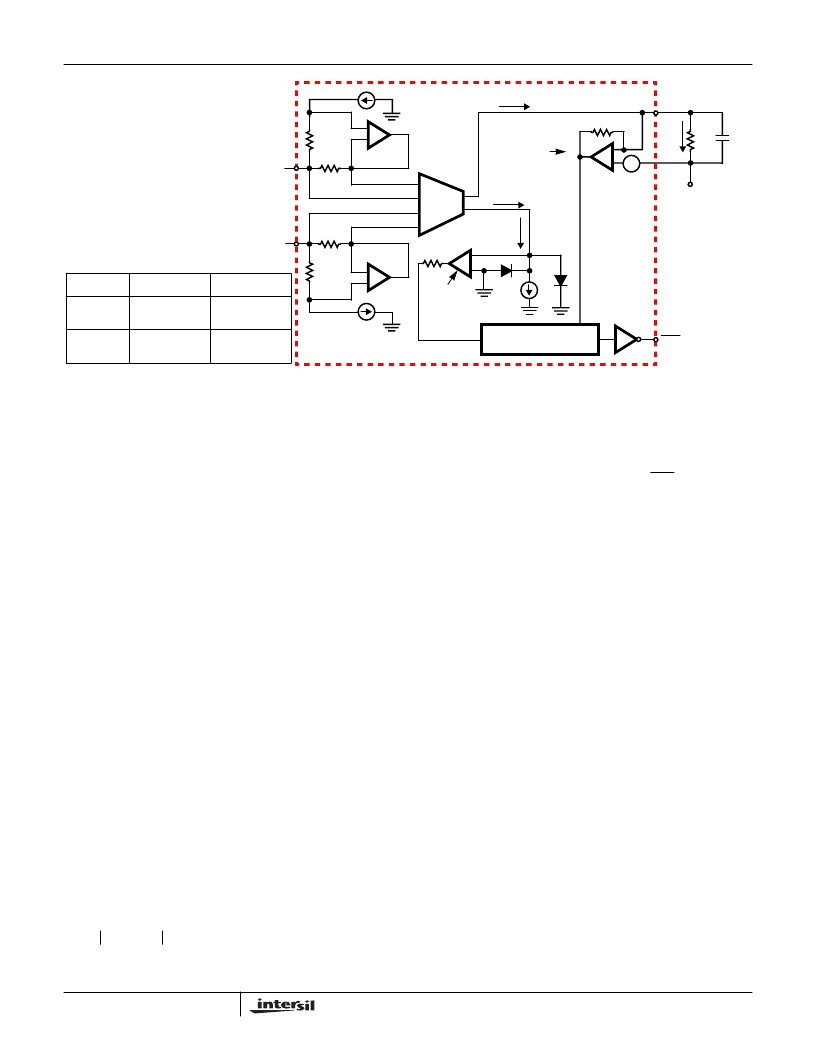- 您現(xiàn)在的位置:買賣IC網(wǎng) > PDF目錄385354 > HC5523 (Intersil Corporation) LSSGR/TR57 CO/Loop Carrier SLIC with Low Power Standby PDF資料下載
參數(shù)資料
| 型號: | HC5523 |
| 廠商: | Intersil Corporation |
| 英文描述: | LSSGR/TR57 CO/Loop Carrier SLIC with Low Power Standby |
| 中文描述: | LSSGR/TR57文書主任/河套低功耗待機載波用戶接口 |
| 文件頁數(shù): | 11/18頁 |
| 文件大?。?/td> | 176K |
| 代理商: | HC5523 |

66
Before proceeding with an explanation of the loop current
detector, ground key detector and later the longitudinal
impedance, it is important to understand the difference
between a “metallic” and “l(fā)ongitudinal” loop currents. Figure 18
illustrates 3 different types of loop current encountered.
Case 1 illustrates the metallic loop current. The definition of
a metallic loop current is when
equal
currents flow out of tip
and into ring. Loop current is a metallic current.
Cases 2 and 3 illustrate the longitudinal loop current. The
definition of a longitudinal loop current is a common mode
current, that flows either out of or into tip and ring
simultaneously.Longitudinalcurrentsintheon-hookstateresult
in
equal
currents flowing through the sense resistors R
1
and
R
2
(Figure 18). And longitudinal currents in the off-hook state
result in
unequal
currents flowing through the sense resistors
R
1
and R
2
. Notice that for case 2, longitudinal currents flowing
away from the SLIC, the current through R
1
is the metallic loop
current plus the longitudinal current; whereas the current
through R
2
is the metallic loop current minus the longitudinal
current. Longitudinal currents are generated when the phone
line is influenced by magnetic fields (e.g. power lines).
Loop Current Detector
Figure 18 shows a simplified schematic of the loop current
and ground key detectors. The loop current detector works
by sensing the metallic current flowing through resistors R
1
and R
2
. This results in a current (I
RD
) out of the
transconductance amplifier (gm
1
) that is equal to the product
of gm
1
and the metallic loop current. I
RD
then flows out the
R
D
pin and through resistor R
D
to V
EE
. The value of I
RD
is
equal to:
I
The I
RD
current results in a voltage drop across R
D
that is
compared to an internal 1.25V reference voltage. When the
voltage drop across R
D
exceeds 1.25V, and the logic is
configured for loop current detection, the DET pin goes low.
The hysteresis resistor R
H
adds an additional voltage
effectively across R
D
, causing the on-hook to off-hook
threshold to be slightly higher than the off-hook to on-hook
threshold.
Taking into account the hysteresis voltage, the typical value
of R
D
for the on-hook to off-hook condition is:
ON
HOOK to OFF
–
HOOK
–
Taking into account the hysteresis voltage, the typical value
of R
D
for the off-hook to on-hook condition is:
OFF
HOOK to ON
–
HOOK
–
A filter capacitor (C
D
) in parallel with R
D
will improve the
accuracy of the trip point in a noisy environment. The value
of this capacitor is calculated using the following Equation:
D
where: T = 0.5ms
Ground Key Detector
A simplified schematic of the ground key detector is shown
in Figure 18. Ground key, is the process in which the ring
terminal is shorted to ground for the purpose of signaling an
Operator or seizing a phone line (between the Central Office
and a Private Branch Exchange). The Ground Key detector
is activated when unequal current flow through resistors R
1
I
RD
I
–
-----------------------------------
I
---------
=
=
(EQ. 24)
R
D
--------------------------------------------------------------------------
=
(EQ. 25)
R
D
--------------------------------------------------------------------------
=
(EQ. 26)
C
D
-------
=
(EQ. 27)
HC5523
DET
R
D
R
2
gm
1
gm
2
gm
1
(I
METALLIC
)
R
D
C
D
V
REF
1.25V
+
-
CURRENT
LOOP
COMPARATOR
V
EE
-5V
GROUND
KEY
COMPARATOR
gm
2
(I
TIP
- I
RING
)
I
RD
R
H
I
1
D
1
D
2
I
GK
RING
TIP
+
-
R
1
+
-
ORDERING INFORMATION
CASE 1
CASE 2
CASE 3
I
METALLIC
I
LONGITUDINAL
I
LONGITUDINAL
I
METALLIC
I
LONGITUDINAL
I
LONGITUDINAL
DIGITAL MULTIPLEXER
+
-
+
-
R
H
FIGURE 18. LOOP CURRENT AND GROUND KEY DETECTORS
HC5523
相關(guān)PDF資料 |
PDF描述 |
|---|---|
| HC5523IM | LSSGR/TR57 CO/Loop Carrier SLIC with Low Power Standby |
| HC5523IP | LSSGR/TR57 CO/Loop Carrier SLIC with Low Power Standby |
| HC5526CM | ITU CO/PABX SLIC with Low Power Standby |
| HC5526CP | ITU CO/PABX SLIC with Low Power Standby |
| HC5526IM | ITU CO/PABX SLIC with Low Power Standby |
相關(guān)代理商/技術(shù)參數(shù) |
參數(shù)描述 |
|---|---|
| HC5523_03 | 制造商:INTERSIL 制造商全稱:Intersil Corporation 功能描述:LSSGR/TR57 CO/Loop Carrier SLIC with Low Power Standby |
| HC5523IM | 制造商:Rochester Electronics LLC 功能描述:DLC/FITL SLIC,58DB LONG BAL,28PLCC,INDUS - Bulk |
| HC5523IMR4722 | 制造商:Rochester Electronics LLC 功能描述:- Bulk |
| HC5523IMX6176C | 制造商:Rochester Electronics LLC 功能描述:- Bulk |
| HC5523IP | 制造商:Rochester Electronics LLC 功能描述:- Bulk |
發(fā)布緊急采購,3分鐘左右您將得到回復(fù)。